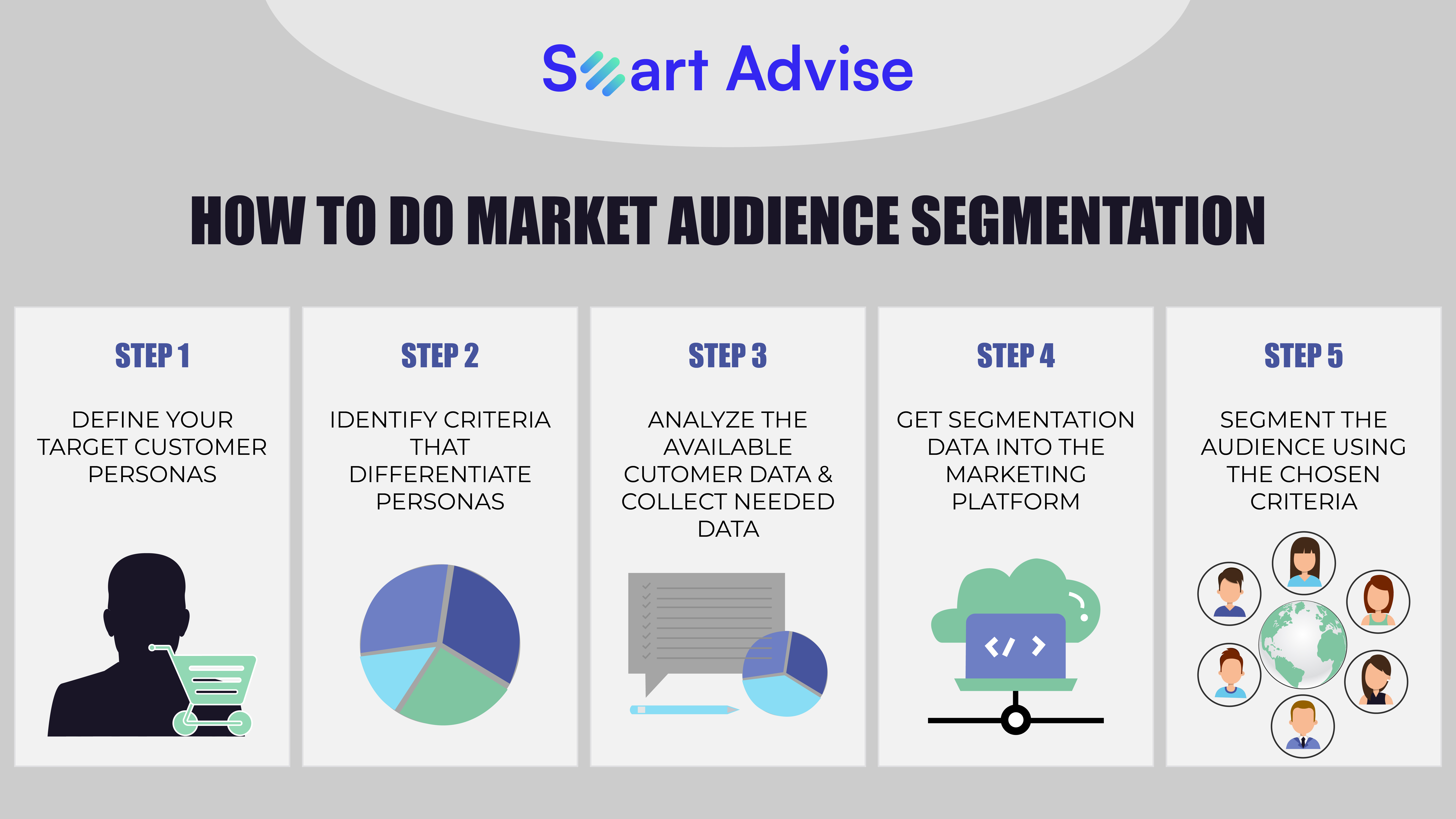
76% of customized clients become happy customers. Due to this, businesses saw their revenues grow by 85% and gross profit up by 25%
Age, region, demographic, behavior, psychology and culture are some of the core factors which form the thesis of market segmentation, which categorically divides consumers and helps brands to align their overall operation such as manufacturing, marketing and sales. As it helps to identify the pain points of the consumers, it gives a clear perspective to the businesses to nourish the quality of the product and to work on the service. This segmentation is the most vital and basic part of the market research industry too, let’s explore it further…
Audience Segmentation
Understanding Diverse Consumer Needs:
Audience segmentation allows market researchers to move beyond the one-size-fits-all approach. Dividing a heterogeneous market into smaller, homogenous segments, researchers can gain a deeper understanding of the diverse needs, preferences, and behaviors of different consumer groups. This nuanced understanding is invaluable for businesses aiming to customize their products or services to specific market segments.

Precision in Targeting:
Through audience segmentation, businesses can identify and target the most receptive audience for their offerings. This precision targeting not only enhances marketing efficiency but also optimizes resource allocation. For example, a product designed for young professionals may have different features and marketing messages compared to a similar product targeting retiree. Segmentation ensures that the right message reaches the right audience, improving the likelihood of a positive response.
Customized Marketing Strategies:
Armed with insights from audience segmentation, businesses can craft personalized marketing strategies for each segment. This includes adapting advertising content, choosing appropriate communication channels, and determining optimal times for engagement. As a result, companies can create more impactful and relevant campaigns that resonate with specific audience segments, fostering stronger connections with consumers.
Enhanced Product Development:
Audience segmentation doesn’t only inform marketing strategies; it also plays a crucial role in product development. In order to develop and adapt their goods to better satisfy consumer expectations, businesses must first understand the distinct demands and preferences of various groups. This iterative approach to product development can lead to the creation of offerings that stand out in the market and cater to the diverse demands of various consumer groups.
Facts & Figures
Let’s take a look at some statistical data to underscore the importance of audience segmentation in the market research industry.
According to a report by Statista, the global market research industry is expected to reach $83.93 billion in 2023, showcasing the growing demand for insights that drive business decision-making.
In a survey conducted by Mckinsey, 76% of consumers said that they prefer personalized experiences. This emphasizes the need for businesses to employ audience segmentation to deliver specific content and offerings.
Also, according to research from McKinsey & Company businesses which use consumer behavior data to their advantage saw an 85% increase in sales growth and a 25% increase in gross profit compared to their competitors.
Benefits of Audience Segmentation in Market Research
Risk Mitigation:
Understanding the distinct characteristics of different audience segments allows businesses to identify potential risks and challenges associated with each group. This proactive approach enables companies to mitigate risks before they escalate, contributing to more resilient and adaptive business strategies.
Improved Communication:
Effective communication is the cornerstone of successful marketing. Audience segmentation enables businesses to speak the language of their target audience, addressing their unique concerns and aspirations. This not only fosters a stronger brand-consumer relationship but also increases the likelihood of customer loyalty and advocacy.
Optimized Resource Allocation:
By focusing resources on the most promising market segments, businesses can optimize their marketing budget and improve return on investment. This resource efficiency is particularly crucial for small and medium-sized enterprises looking to compete in competitive markets with limited resources.
Market Expansion Opportunities:
Audience segmentation not only helps in understanding existing markets but also in identifying untapped opportunities. Through careful analysis, businesses can uncover new and emerging segments that align with their capabilities, opening doors for market expansion and diversification.
Cultural Sensitivity in Audience Segmentation
Recognizing and incorporating cultural nuances is a crucial aspect of effective audience segmentation. Cultural factors, including language, values, and traditions, play a profound role in shaping consumer behaviors. Market researchers need to be attuned to these cultural subtleties to ensure their segmentation strategies resonate with diverse audience groups.
Cultural sensitivity goes beyond mere demographic data and involves a deep understanding of the cultural context in which consumers operate. This awareness allows businesses to craft their messaging, branding, and product offerings in a way that respects and aligns with the values of specific cultural segments.
Failure to consider cultural factors can lead to misinterpretation of consumer behaviors and preferences. For example, a marketing campaign that resonates well in one cultural context may fall flat or even offend in another. Incorporating cultural sensitivity into audience segmentation helps firms avoid errors and engage with customers from diverse backgrounds in a genuine way.
Challenges and Considerations
While audience segmentation offers numerous benefits, it’s essential to acknowledge the challenges associated with this approach. Some of the common considerations include:
Data Privacy Concerns:
In an era of heightened data privacy concerns, businesses must navigate the ethical use of customer data. Striking a balance between personalized marketing and respecting privacy is crucial to maintaining trust with consumers.
Dynamic Consumer Behavior:
Consumer behavior is constantly evolving, influenced by various factors such as societal trends, technological advancements, and economic changes. Regular updates and reassessment of segmentation criteria are necessary to ensure that businesses stay aligned with shifting consumer dynamics.
In Conclusion,
To sum up, audience segmentation is fundamental to the market research field since it leads to better product creation, more efficient marketing, and a better knowledge of consumers. Market competition is heating up, therefore companies who use audience segmentation to their advantage are better able to meet the demands of their various customer subsets. Connect with us at Smart Advise to get a more detailed perspective of the market!